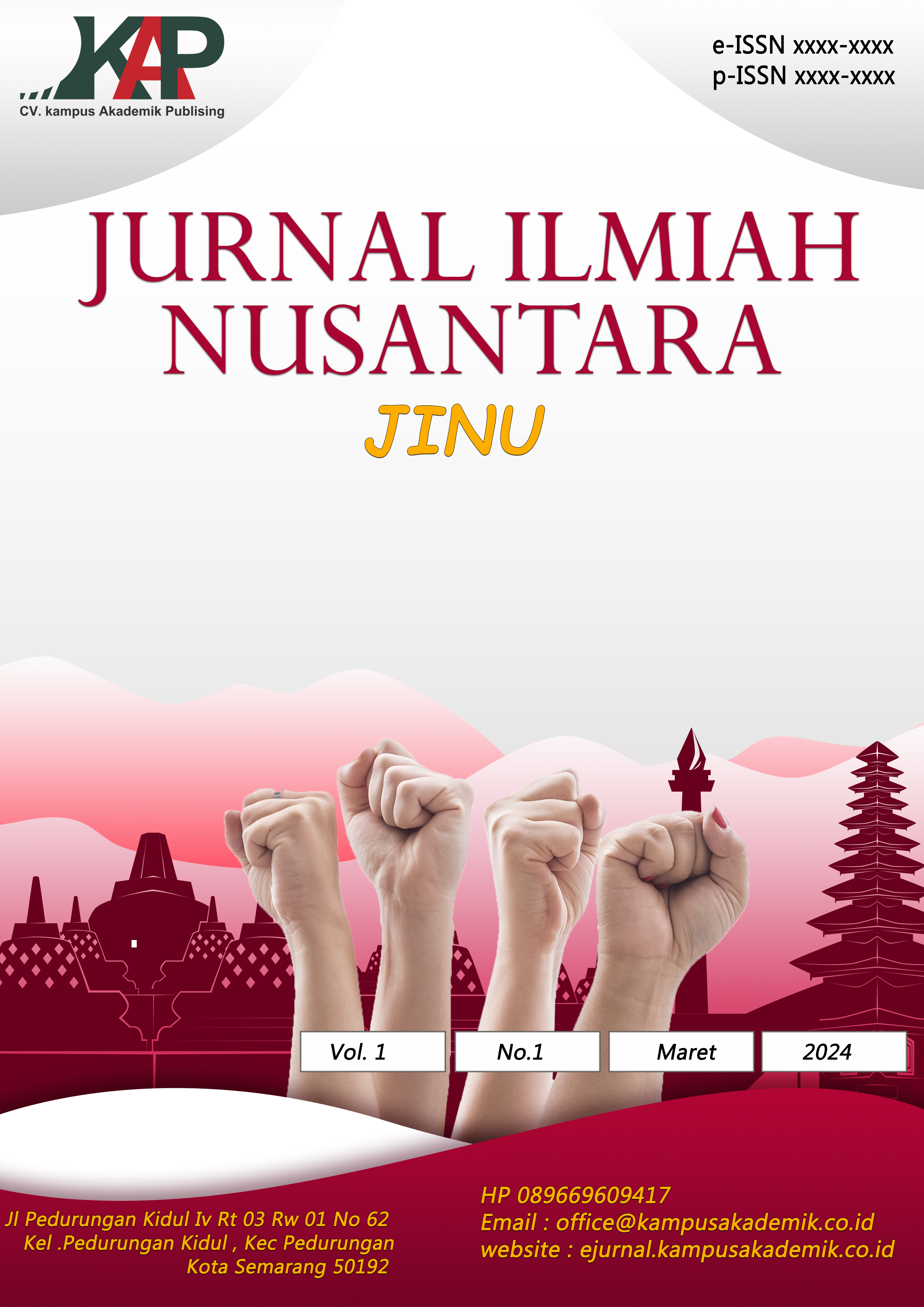Analisis Hermeneutika Ayat-Ayat Mutasyabihat: Pendekatan Kaidah Al-Isti’arah Dan Al-Tasybih Dalam Ushul Tafsir
DOI:
https://doi.org/10.61722/jinu.v2i4.5091Keywords:
Mutashabihat Verses, Hermeneutics, Al-Isti'arah, Al-Tashbih, Ushul Tafsir.Abstract
. This research investigates mutashabihat verses in the Qur'an through the lens of hermeneutics, focusing on applying the principles of al-isti'arah (metaphor) and al-tashbih (simile) as stipulated within the discipline of ushul tafsir. Mutashabihat verses, characterized by semantic ambiguity and a plurality of interpretations, frequently spark discourse among exegetes. Adopting a hermeneutical approach facilitates the deconstruction of intrinsic meanings by considering linguistic, historical, and theological contexts. The principles of al-isti'arah and al-tashbih, as rhetorical instruments of the Qur'an, are essential in the effective transmission of divine messages. This study aims to identify the modus operandi of implementing these two principles in the explication of mutashabihat verses and their contribution to holistic comprehension. The research findings are expected to contribute substantially to the methodology of Qur'anic exegesis, particularly in addressing textual ambiguity, and to enrich the scholarly corpus of ushul tafsir.
References
Abdul Qahir Al-Jurjani. (1995). Dalail al-I'jaz fi Ilm al-Ma'ani. Kairo: Dar al-Hadith.
Al-Baqillani, Abu Bakr Muhammad ibn al-Tayyib. (1997). I'jaz al-Qur'an. Beirut: Dar al-Kutub al-Ilmiyah.
Al-Dhahabi, Muhammad Husayn. (1976). Al-Tafsir wa al-Mufassirun. Kairo: Maktabah Wahbah.
Al-Ghazali, Abu Hamid. (1961). Al-Iqtisad fi al-I'tiqad. Kairo: Maktabah al-Khanji.
Al-Jurjani, Abdul Qahir. (1995). Asrar al-Balaghah. Kairo: Maktabah al-Thaqafah al-Diniyyah.
Al-Maturidi, Abu Mansur. (2004). Ta'wilat Ahl al-Sunnah. Beirut: Dar al-Kutub al-Ilmiyah.
Al-Qurtubi, Abu Abdillah Muhammad ibn Ahmad. (2006). Al-Jami' li Ahkam al-Qur'an. Kairo: Dar al-Hadith.
Al-Raghib Al-Isfahani, Abu al-Qasim al-Husayn ibn Muhammad. (2009). Mufradat Alfazh Al-Qur'an. Beirut: Dar al-Qalam.
Al-Suyuti, Jalaluddin. (1974). Al-Itqan fi Ulum al-Qur'an. Kairo: Maktabah al-Tijariyah al-Kubra.
Al-Tabari, Muhammad ibn Jarir. (2000). Jami' al-Bayan fi Ta'wil Ay al-Qur'an. Beirut: Mu'assasah al-Risalah.
Al-Zamakhsyari, Mahmud ibn Umar. (2002). Al-Kashshaf an Haqa'iq Ghawamid al-Tanzil. Beirut: Dar Ihya' al-Turath al-Arabi.
Al-Zarkasyi, Badr al-Din Muhammad ibn Abdullah. (1988). Al-Burhan fi Ulum al-Qur'an. Kairo: Dar al-Ma'rifah.
Arkoun, Mohammed. (1994). Rethinking Islam: Common Questions, Uncommon Answers. Boulder: Westview Press.
Fakhruddin Ar-Razi, Muhammad ibn Umar. (1981). Mafatih al-Ghayb. Beirut: Dar Ihya' al-Turath al-Arabi.
Gadamer, Hans-Georg. (2004). Truth and Method. New York: Continuum.
Ibn Katsir, Ismail ibn Umar. (1999). Tafsir al-Qur'an al-Azhim. Beirut: Dar al-Kutub al-Ilmiyah.
Nasr Hamid Abu Zayd. (1994). Mafhum al-Nash: Dirasah fi Ulum al-Qur'an. Kairo: Maktabat Madbouli.
Palmer, Richard E. (1969). Hermeneutics: Interpretation Theory in Schleiermacher, Dilthey, Heidegger, and Gadamer. Evanston: Northwestern University Press.
Quraish Shihab, M. (2007). Tafsir Al-Mishbah: Pesan, Kesan dan Keserasian Al-Qur'an. Jakarta: Lentera Hati.
Ricoeur, Paul. (1976). Interpretation Theory: Discourse and the Surplus of Meaning. Fort Worth: Texas Christian University Press.
Sugiyono. (2018). Metode Penelitian Kuantitatif, Kualitatif, dan R&D. Bandung: Alfabeta.
Downloads
Published
Issue
Section
License
Copyright (c) 2025 JURNAL ILMIAH NUSANTARA

This work is licensed under a Creative Commons Attribution-ShareAlike 4.0 International License.













